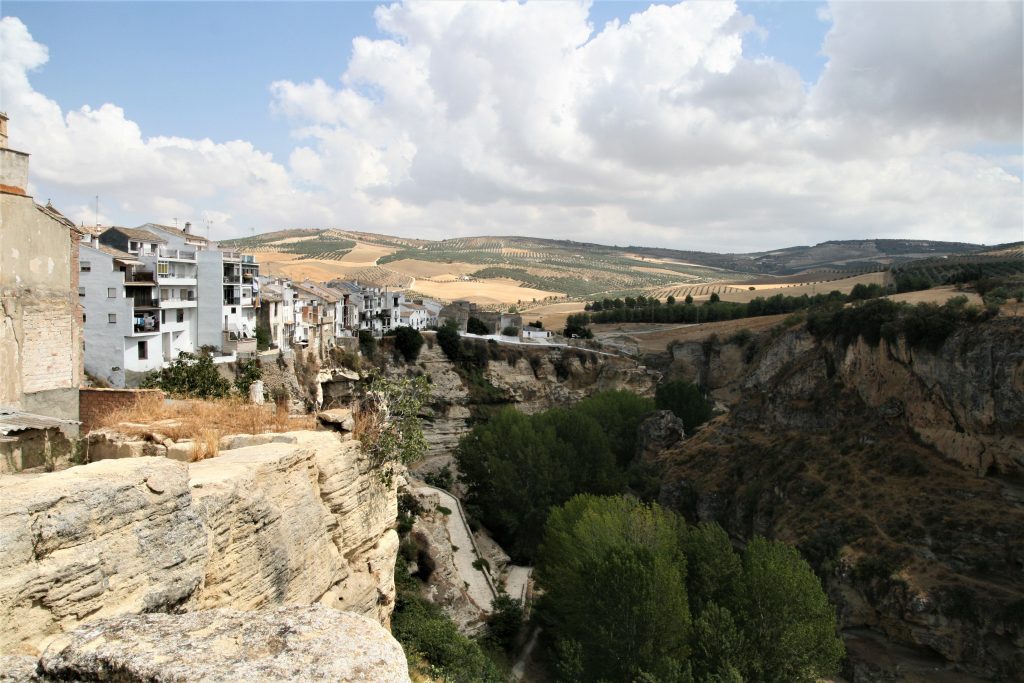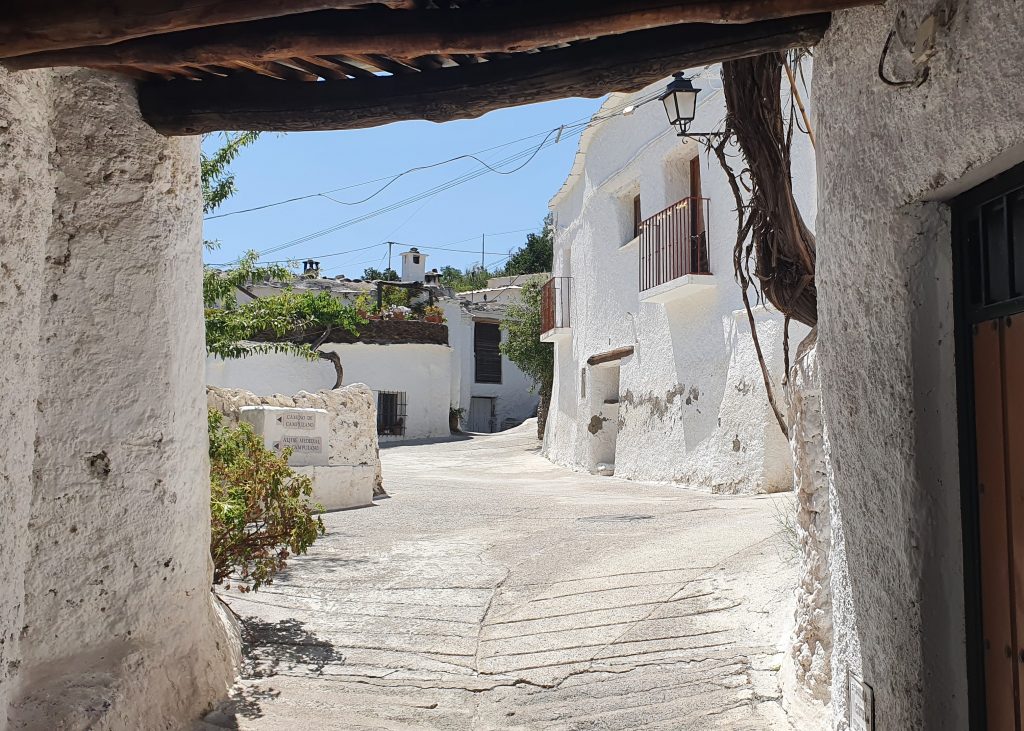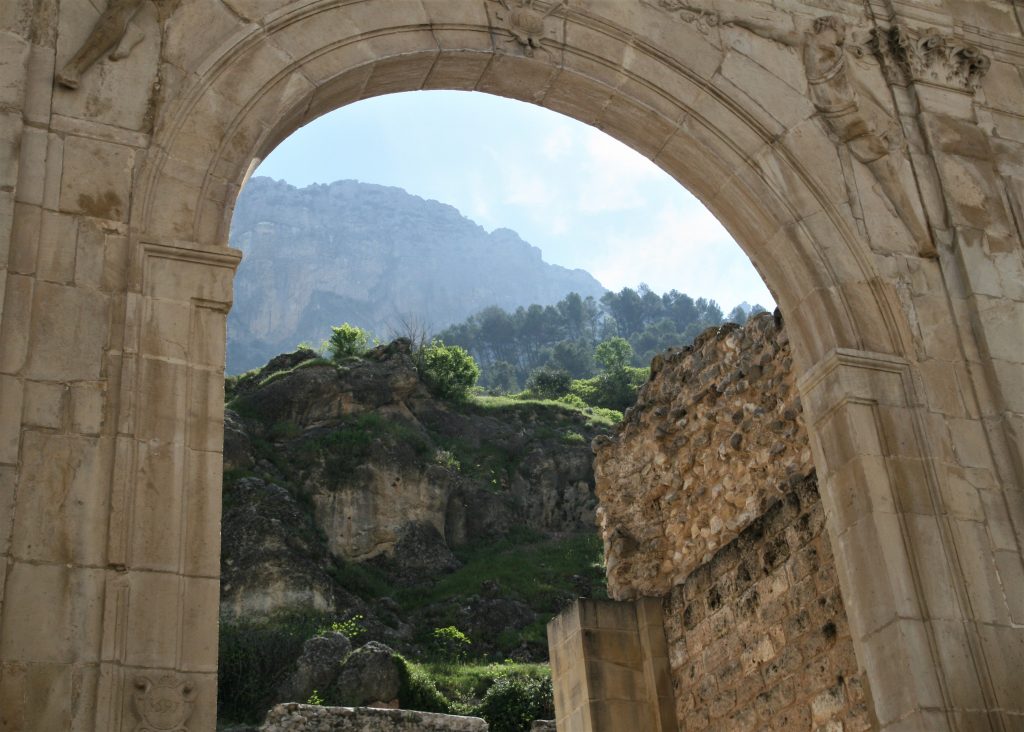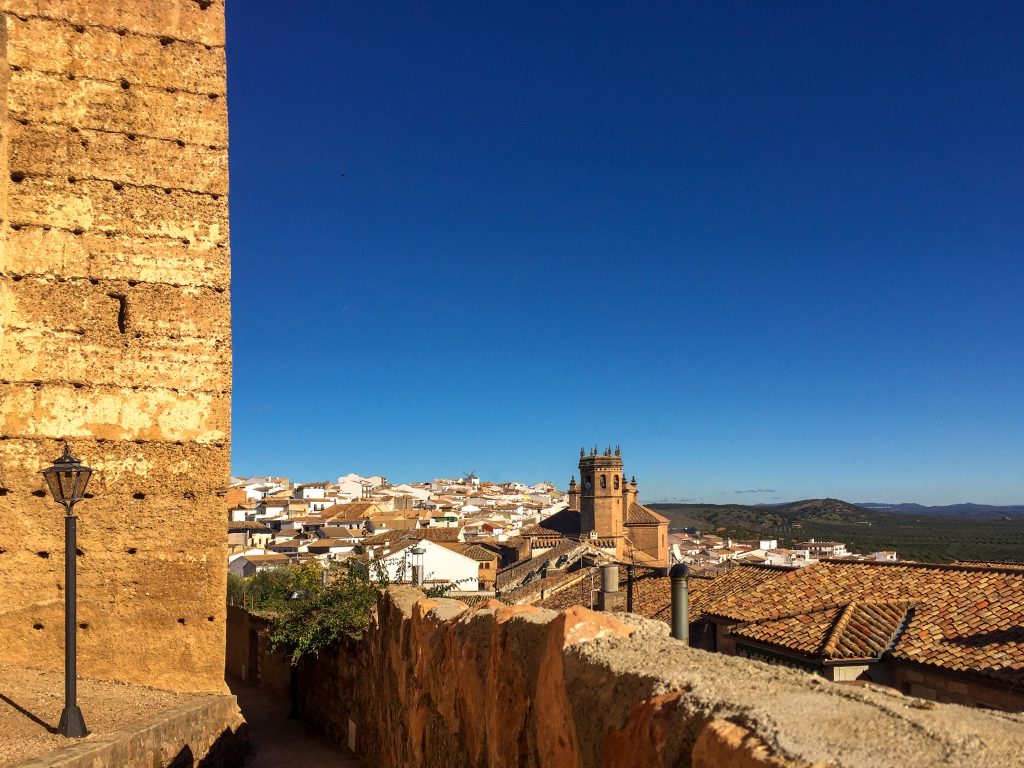ANDALUCIA – Of course, the villages in Andalucia featured in this article have not really been forgotten. They are just not on the most well-trodden paths in the region. However, as popular as this southern Spanish region is, with major crowd pullers such as Seville, Granada, Córdoba, and the famous pueblos blancos, there are so many hidden gems waiting for you. Therefore, InSpain.news has selected six for you.
These six villages in Andalucia would not be so special without their beautiful surroundings. They are all located a stone’s throw from a beautiful nature reserve or mountain range. Spots where you can enjoy beautiful walks and cycling, a lovely picnic, or drive beautiful routes by car. And each one has areas where, in autumn, you are treated to an eye-catching colourful spectacle through the changing trees.
Alhama de Granada
This village lies on the edge of a spectacular gorge in the province of Granada. Situated near the Sierras de Tejeda, Almijara y Alhama nature reserve, it is truly a hidden gem. Not without reason several poets and writers were inspired here throughout history. Teofilo Gautier, for example, described the town as ‘an eagle’s nest, hanging from a huge rock or peak’.

It is best to start at the Plaza de la Constitución in the centre. Choose something to eat or drink there at Bar El Tigre. This popular bar even earned a mention in The Guardian. Immediately on the square is the monastery of the order ‘Carmelitas Calzados’. Here the town hall is now, next to the Iglesia del Carmen. A harmonious, sand-coloured ensemble of buildings behind which you immediately have a magnificent view of the gorge with the ruins of the former flour factory below.
Moorish Alcazaba
Behind a brick-red wall is the castle that was built on the remains of a Moorish Alcazaba. And a few streets further, on a picturesque square, is the beautiful Iglesia de la Encarnación.
One of the nice things about Alhama is that it has not been polished at all. Dilapidated corners, peeling paint, and the ruins of an old church contrast fascinatingly with the narrow streets inlaid with pebbles. Alhama gives you the feeling that you are discovering the town yourself. Don’t miss the sensational rock-hewn ‘devil’s ladder’. This leads you into the gorge where you can walk and visit the old flour factory. Find more info on turismodealhama.com
La Taha de Pitres
Remaining in the province of Granada, on the southern flanks of the Sierra Nevada lies the area of La Alpujarra. Here you will find the famous villages of Lanjarón, Órgiva, Pampaneira, Capileira, Bubión and Trevélez. And the much less known is La Taha de Pitres. This consists of seven tiny, beautiful, and touristically almost unspoilt mini villages in an idyllic valley. These are probably the most charming villages in Andalucia. A valley that is very green thanks to its location between the two meltwater rivers Río Poqueira and Río Trevélez. Together with many sources, these fertilise the almost impassable, rectangular fields that make the highest mountain peaks accessible like steps. So, together, the hamlets of Pitres, Capilerilla, Mecinilla, Atalbeitar, Fondales, Ferreirola and Mecina formed an administrative unit under Arab rule.
The highest village is at 1,400 metres and the lowest at 600 metres. However, despite its conspicuous absence in travel guides and travel blogs, here is enough for a rewarding visit. In addition to the special, still very Arab architecture from bygone times, you will be treated to monumental chestnut trees, ferruginous springs, ancient footpaths that have never changed course, antique wooden bridges, living legends, and unknown flowers.
Alternatively, for a bit of excitement, visit the weekly Friday market in slightly larger Pitres. Enjoy a beer at one of the bars on a shady gnome terrace or marvel at the difference in height in the lowest-lying village of Fondales. You can walk from village to village without ever stepping on asphalt.
Turismoalpujarra.com
Cazorla
Cazorla is a spectacular one among the white villages in Andalucia. It is impressively situated on a slope behind which the national park Sierras de Cazorla, Segura y las Villas begins. And from its elevated position, the mountain village has an endless view over the sea of olive trees that is so typical of the province of Jaén. The village forms the gateway to spectacular nature that makes you feel more like in Canada than in Andalucia. Thanks to more than 50 springs and fountains, everything in and around Cazorla looks un-Andalucian lush and green.
Important for the village are the remains of the Renaissance Santa María church from the sixteenth century. This now houses the tourist information. It was built above the river Cerezuela, which was canalised for this purpose. However, the church was largely destroyed during severe storms in 1694. The underground vaults that connect the church with the Santa Maria square can be visited with a guide. High above the white houses and in front of the rugged rocks behind Cazorla, towers the fortress Castillo de la Yedra. Construction began under Moorish rule and was completed by Christians. Inside you will find the museum of the arts and ancient customs of the area.
Cazorla is a succession of charming streets, flower-potted balconies, beautiful vistas, cozy squares, and historic fountains. On the Plaza de la Constitución are bars and the ice cream shop Tentaciones, which sells delicious homemade ice cream. Also, try the local dish Rinran in Mesón Don Chema. This is a type of stew of potato, dried red peppers, mashed olives, and onion topped with a boiled egg. In the national park, you can walk endlessly, practice outdoor sports, and don’t forget to visit the origin of Andalucia’s largest river, Guadalquivir.
Turismoencazorla.com
Los Banos de Encina
Still in the province of Jaén, but in the far north on the border with the province of Ciudad Real, is the small village of Los Baños de la Encina. It is surrounded by the unspoiled nature of the Sierra de Andújar and the Sierra Morena. Iberian lynx still live here in the wild, which, if you search, you may catch a glimpse of these endangered felines.
The village with a monumental historic centre is a good starting point for walks through the nature reserve. Also it contains the best-preserved Moorish fortress in Spain. This towers high above the buildings. Castillo de Burgalima dates back to the tenth century. The long wall with fourteen towers is almost completely standing. The fifteenth tower, the Torre del Homenaje’, was added by the Christians. Via extremely picturesque streets covered with cobblestones – the car hardly fits through them – you arrive at the castle. Even if this is not open, a walk around is also beautiful because of the impressive view of the Rumbler reservoir. Here you can kayak and swim at Playa del Tamujoso beach.
The well-preserved town palaces, the Baroque monastery, and the Gothic church in the village make it clear life here must have been very good throughout history. If you are hungry, join El Olivar de Guzmanes in Calle Trinidad with special local dishes, including lots of game.
bdelaencinaturismo.com
Setenil de las Bodegas
In this small village eighteen kilometers north of Ronda in the province of Cádiz, the shade when you sit on a terrace is not thanks to a parasol, tree, or shelter, but to a large rock hanging over the street. However, a visit toSetenil de las Bodegas is not for the claustrophobic. It is built halfway in and around huge sandstone cliffs along a gorge carved by the river Guadalporcún over the centuries. The gorge is up to fifty metres deep in places.
At first glance you see a ‘pueblo blanco’, but if you look more closely you realise in some streets it is only facades. As the rest of the houses disappear into the rocks. The rock wall by the river Guadalporcún looks more like a somewhat strange apartment, with windows. The houses here are called ‘abrigo rocas’: shelter in the rocks.
Plaza de Andalucia
Park your car immediately upon arrival in the village. Because the narrow streets are not suitable for driving. From the cozy Plaza de Andalucía with two nice terraces, you can walk to the historic centre, or ‘La Villa’. Walking further it seems impossible to live in Setenil if you are taller than 1.60 metres. Because the houses are so tiny and the doors are so low.
From river level, you can take a long staircase to a square at the top of the gorge from where you have a nice overview of the village. There is also a beautiful church. You will come across countless quaint corners with interesting details between narrow alleys with tiny balconies glued directly to the rock. Setenil was once a prosperous village thanks to trade from the wine of the surrounding vineyards. It owes the addition ‘de las Bodegas’ to this. Do not miss the famous streets Cuevas del Sol and Cueva de la Sombra. Turismodesetenil.com





